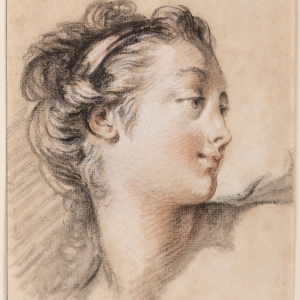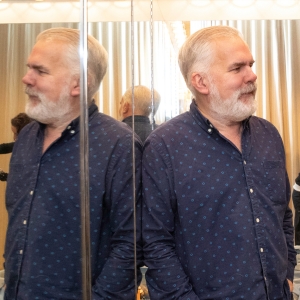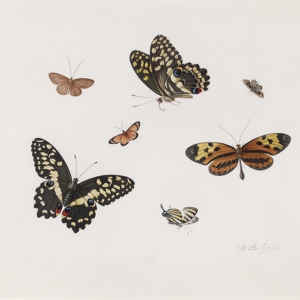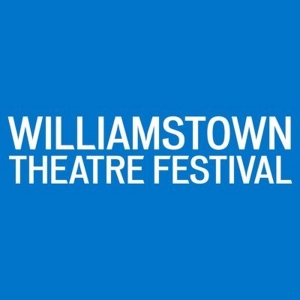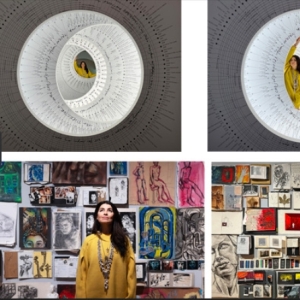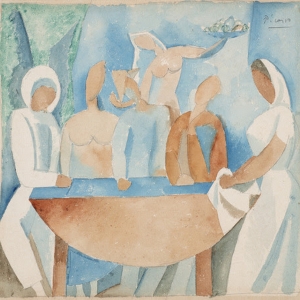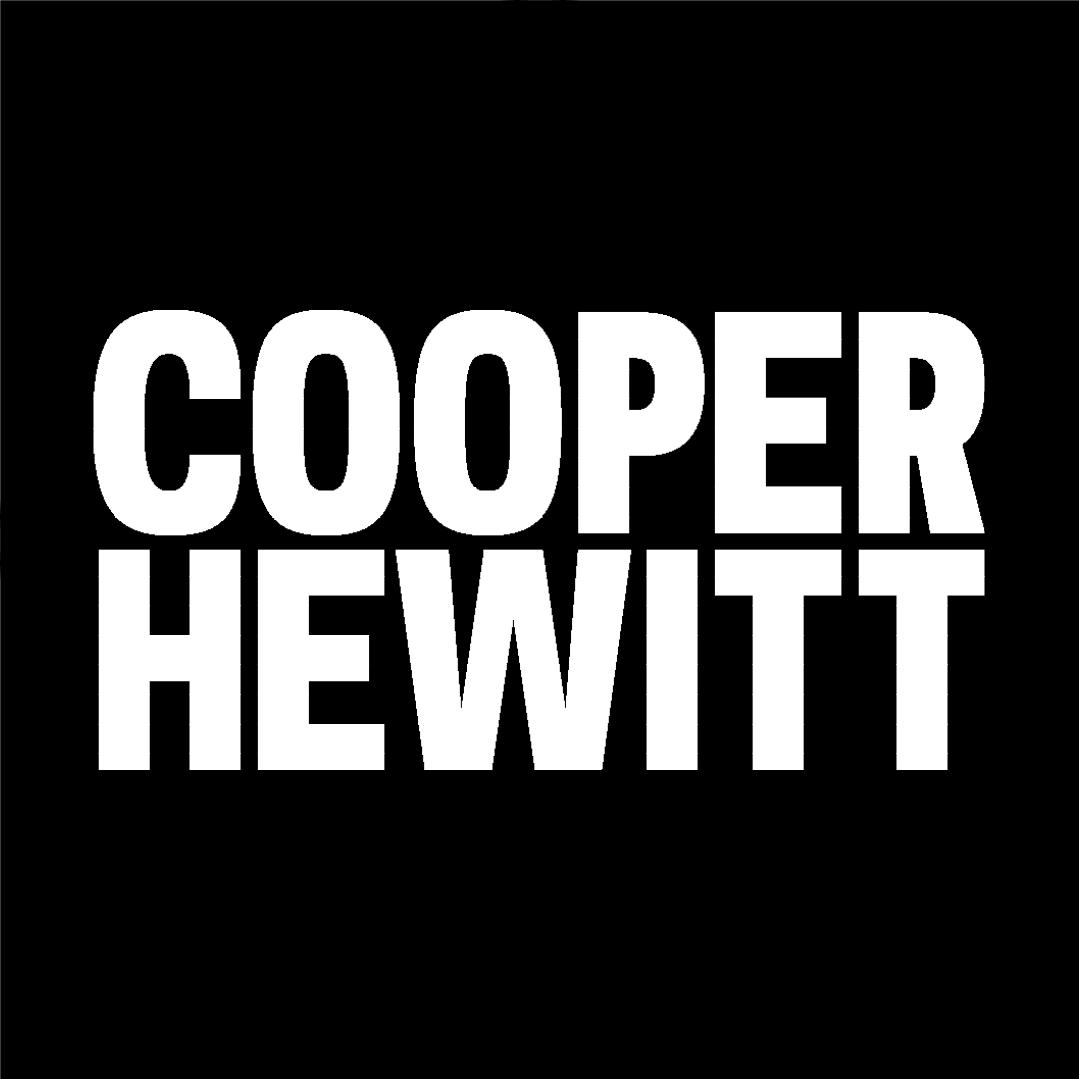
At a Glance
Time Needed: 120 min.
Ages: All
Allows Food/Drink: No
Luggage Storage: No
2 E 91st St, New York, NY 10128 Get Directions
Cooper Hewitt, Smithsonian Design Museum Videos
Take a deep dive into the creative process and extraordinary designs of midcentury designer Alexander Girard (1907-1993). Join designer Todd Oldham and writer Kiera Coffee in a discussion around their new publication, Alexander Girard: Let the Sun In (Phaidon, 2024), with Susan Brown, Associate Curator and Acting Head of Textiles. Brown will highlight Cooper Hewitt’s extensive holdings of Girard textiles and objects, and the ways in which his sensational colors and patterns are still inspiring designers and design lovers today.
Views East Jordan and Traverse City, Michigan Learn how the East Jordan, MI students engaged with community members through culinary and linguistic exchanges. Learn how the East Jordan, MI community answered the question What is home?
East Jordan is a small town in northern Michigan. Over recent decades, the seasonal agricultural industry and other factors have attracted a small but growing group of Spanish speakers from Latin American countries and the southern United States to the area. Angela Barrera, a Spanish teacher at the East Jordan Middle/High School initiated a student-led project, which focused on cultivating connections through culinary and linguistic exchanges. Comida, Conversación, y Comunidad tells the story of a changing community coming together, highlighting themes of home, belonging, and the power of youth collaboration. Learn how the East Jordan, MI community answered the question What is home? Views of the East Jordan, MI community.
East Jordan Middle/High School students, faculty, school leadership and community members answer the question what is home? Learn how the East Jordan, MI students engaged with community members through culinary and linguistic exchanges. Views of the East Jordan, MI community.
Session two of the inaugural Making Home Saturday Series features Chief of the Delaware Tribe of Indians Brad KillsCrow, Maria Nicanor, Director of Cooper Hewitt, Smithsonian Design Museum and Kevin Young, Director of the National Museum of African American History and Culture. The session explores the central role that community and organizational leaders play in reflecting a multiplicity of identities and concerns as a means of cultivating belonging and reshaping an understanding of home. The conversation is moderated by architect, designer, and scholar Mabel O. Wilson. The Making Home Saturday Series is a quarterly program that pairs special guests with participants from Making Home—Smithsonian Design Triennial. The program’s two-part sessions include conversations on exhibition-related themes, including systems, belonging, memory, care, and building, as well as the contemporary concepts of home related to race, class, migration, climate, and technology. SPEAKERS Chief Brad KillsCrow is a member of the Lenape and Lakota Tribes. He was raised in Pawhuska, Oklahoma and attended Bacone College on a basketball scholarship. He joined the US Navy in 1996 and served in the Persian Gulf and then worked in law enforcement from 2002 until 2011 which included the Kaw Tribal Police and the Ponca City Police Departments. Chief KillsCrow is a graduate of the Federal Law Enforcement Training Center – BIA Police Academy. For the past seven years, he has been employed by the Tonkawa Tribe of Oklahoma as Director of their Indian Community Development Block Grant (ICDBG) program. As the governing body of the Delaware Tribe, it is the duty of the Chief to provide leadership in maintaining tribal culture and values, providing services to tribal members, and ensuring a viable future through economic development. Maria Nicanor is an architecture and design curator and historian. She is passionate about public access to culture and rethinking the traditional roles of museums by experimenting with new storytelling formats that connect cultural institutions with civic life. Before joining Cooper Hewitt as its director, Nicanor had been the executive director of Rice Design Alliance at the Rice University School of Architecture , director of the Norman Foster Foundation in Madrid, and a curator at the Design, Architecture, and Digital Department of the Victoria & Albert Museum in London. Before that, Nicanor had spent most of her career as a curator working on architecture projects and other initiatives at the Solomon R. Guggenheim Museum in New York. Kevin Young is the Andrew W. Mellon Director of the Smithsonian’s National Museum of African American History and Culture. As the nation’s largest museum dedicated to telling the African American story, NMAAHC welcomes millions of visitors annually and engages a national audience through world-class online programming and digital access to its collections, including the recent launch of the Searchable Museum. Prior to joining the Smithsonian, Young previously served as the director of the Schomburg Center for Research in Black Culture. A professor for two decades, he began his career in museums and archives while serving as curator and Candler Professor at Emory University from 2005 to 2016. Young is the author of sixteen books of poetry and prose, most recently Stones, shortlisted for the T.S. Eliot Prize; Blue Laws: Selected & Uncollected Poems 1995-2015, longlisted for the National Book Award; and Emile and The Field, named one of the best children’s books of 2022 by the New York Times. His nonfiction book Bunk was also longlisted for the National Book Award, a finalist for the National Book Critics Award for criticism, and named on many “best of” lists for 2017. Young is the editor of eleven other volumes, most recently the acclaimed anthology African American Poetry: 250 Years of Struggle & Song. He is a member of the American Academy of Arts and Sciences, the American Academy of Arts and Letters, the Society of American Historians, and was named a Chancellor of the Academy of American Poets in 2020. Mabel O. Wilson (Moderator) is a professor of Architecture and chair of African American and African Diaspora Studies at Columbia University. With her practice Studio&, she was a member of the design team for the Memorial to Enslaved Laborers at the University of Virginia. Exhibitions of her work have been at the Venice Architecture Biennale, SFMoMA, and the Art Institute of Chicago. Her books include Negro Building: Black Americans in the World of Fairs and Museums, and co-edited the volume Race and Modern Architecture. For MoMA, she was co-curator of Reconstructions: Architecture and Blackness in America (2021).
In celebration of the opening of Making Home—Smithsonian Design Triennial, Cooper Hewitt presents session one of the inaugural Making Home Saturday Series program. Curators Alexandra Cunningham Cameron, Christina L. De León, and Michelle Joan Wilkinson introduce the exhibition’s themes, participants, and development, and explore how the exhibition’s diverse contemporary perspectives and approaches to home across the United States, U.S. Territories, and Tribal Nations create a greater understanding of how design impacts this country, its value systems, and landscapes. The conversation is moderated by previous Smithsonian Design Triennial curator Andrea Lipps. The Making Home Saturday Series is a quarterly program that pairs special guests with participants from Making Home—Smithsonian Design Triennial. The program’s two-part sessions include conversations on exhibition-related themes, including systems, belonging, memory, care, and building, as well as the contemporary concepts of home related to race, class, migration, climate, and technology. SPEAKERS Alexandra Cunningham Cameron is the curator of contemporary design and Hintz Secretarial Scholar at Cooper Hewitt, Smithsonian Design Museum. She has served as the editor in chief of independent arts journal The Miami Rail, the creative director of the Design Miami fairs, and an independent curator, writer, and advisor whose work has spanned public art, collections, educational programs, and exhibitions engaging an expansive roster of international artists, designers, and architects. Focusing on multidisciplinary practices, Cameron has organized major projects with Yona Friedman, Dozie Kanu, Philippe Malouin, Duro Olowu, and the late fashion designer Willi Smith. She has contributed to publications such as the Financial Times, PIN-UP, Cultured, and Topical Cream in addition to numerous journals, books, and monographs. Cameron’s work has been acknowledged with awards from the Association of Art Museum Curators, the Smithsonian, Wallpaper, and Designboom. Portrait photo credit: Jeremy Liebman. Christina L. De León is Associate Curator of Latino Design and the Acting Deputy Director of Curatorial at Cooper Hewitt. Her research focuses on the design and decorative arts of the Americas. De León has held previous positions at the Americas Society and the Metropolitan Museum of Art. Michelle Joan Wilkinson is a curator at the Smithsonian’s National Museum of African American History and Culture, where she is expanding the museum’s collections in architecture and design. She co-curated two inaugural NMAAHC exhibitions: A Century in the Making: Building the National Museum of African American History and Culture and A Changing America: 1968 and Beyond. In 2018, she served as lead organizer for the museum’s three day symposium, “Shifting the Landscape: Black Architects and Planners, 1968 to Now.” Andrea Lipps (Moderator) is Associate Curator of Contemporary Design and the Founding Head of the Digital Curatorial Department at Cooper Hewitt—the museum’s first new collecting department in more than 125 years. As Head, she leads efforts to collect and care for new media types in the permanent collection and innovates scholarship in the field. Lipps further conceives and organizes ambitious, award-winning exhibitions and publications including, most recently, “An Atlas of Es Devlin” (2023). Her past exhibitions and books include “Nature—Cooper Hewitt Design Triennial” (2019), “The Senses: Design Beyond Vision” (2018), and “Beauty—Cooper Hewitt Design Triennial” (2016). An accomplished writer and editor, Lipps authors and edits publications, essays, and scholarly articles on contemporary design and digital collecting. She is a sought-after academic lecturer and visiting critic, and frequently moderates and speaks at events, symposia, and academic conferences.
More in The Upper East Side
More Museums
- The Tenement Museum
- New Museum
- International Center of Photography
- Museum at Eldridge Street
- National Museum of the American Indian
- National September 11 Memorial & Museum
- The Rubin Museum of Art
- Whitney Museum of American Art
- The Morgan Library & Museum
- Museum of Modern Art (MoMA)
Cooper Hewitt, Smithsonian Design Museum Frequently Asked Questions
The closest subway stops to Cooper Hewitt, Smithsonian Design Museum at 2 E 91st St in New York City are:
1. 96th Street Station: Located on the Lexington Avenue Line (4, 5, and 6 trains), this station is just a short walk from the museum. Exit the station and head south on Lexington Avenue until you reach 91st Street, then make a left.
2. 86th Street Station: Also on the Lexington Avenue Line (4, 5, and 6 trains), this station is a bit further from the museum but still within walking distance. Exit the station and head north on Lexington Avenue until you reach 91st Street, then make a right.
Both of these subway stations are easily accessible and will get you to the museum conveniently. Remember to check for any subway updates or service changes before your visit. You can find the latest information on the official MTA website: MTA.info.
While you're in the area, I recommend exploring the beautiful Central Park, which is just a stone's throw away from the museum. Take a leisurely stroll through the park, rent a bike, or have a picnic on the Great Lawn. It's a great way to relax and enjoy nature in the heart of the city.
If you're feeling hungry after your museum visit, there are plenty of dining options nearby. Some popular choices include:
- Sarabeth's: A charming restaurant known for its delicious brunch options and homemade jams. It's located at 1295 Madison Avenue, just a few blocks south of the museum. Check out their menu and make a reservation at Sarabeth's Upper East Side.
- The Boathouse: Situated in Central Park, The Loeb Boathouse offers a picturesque setting for a meal. Enjoy classic American cuisine while overlooking the park's scenic lake. Visit their website for more information: The Central Park Boathouse.
I hope you have a fantastic time exploring the Cooper Hewitt Museum and the surrounding area!
The closest bus stops to Cooper Hewitt, Smithsonian Design Museum at 2 E 91st St in New York City are:
1. Madison Av/E 92 St: This bus stop is served by the M1, M2, M3, and M4 buses. You can check for updates on the MTA website [here](http://bustime.mta.info/).
2. Madison Av/E 89 St: This bus stop is served by the M1, M2, M3, and M4 buses as well. You can find bus updates on the MTA website [here](http://bustime.mta.info/).
Please note that bus routes and schedules are subject to change, so it's always a good idea to check for updates before your trip. Enjoy your visit to the Cooper Hewitt, Smithsonian Design Museum!
The ideal length of time to plan for a visit to Cooper Hewitt, Smithsonian Design Museum in New York City is typically around 2-3 hours. This will give you enough time to explore the museum's extensive collection, engage with interactive exhibits, and fully immerse yourself in the world of design.
Cooper Hewitt offers a unique and interactive experience, allowing visitors to engage with design through various mediums such as textiles, furniture, graphics, and digital installations. Take your time to appreciate the intricate details and innovative concepts showcased throughout the museum.
If you're a design enthusiast or have a particular interest in a specific exhibition, you may want to allocate more time to fully explore and absorb everything the museum has to offer. Additionally, Cooper Hewitt often hosts temporary exhibitions and special events, so make sure to check their website for any upcoming highlights that might pique your interest.
Remember, it's always a good idea to check the museum's hours of operation and plan your visit accordingly. Enjoy your time at Cooper Hewitt, Smithsonian Design Museum and embrace the creativity and inspiration that awaits you!
Cooper Hewitt, Smithsonian Design Museum in New York City allows visitors to bring their own food and drinks into the museum. However, they kindly request that you enjoy your refreshments in designated areas such as the garden or outdoor spaces. Additionally, there is a café located on-site where you can purchase food and beverages if you prefer. So whether you want to bring your own snacks or indulge in the museum's offerings, you have options to satisfy your hunger and thirst while exploring the world of design at Cooper Hewitt.
Cooper Hewitt, Smithsonian Design Museum in New York City does not have a luggage storage facility on site. However, there are several options available nearby for storing your luggage while you visit the museum.
One convenient option is to use a luggage storage service such as LuggageHero or Vertoe. These services allow you to securely store your bags at nearby businesses, such as hotels or shops, for a small fee. You can easily find and book these services online or through their mobile apps.
Another option is to check if your hotel offers luggage storage for its guests. Many hotels in the city provide this service, allowing you to store your bags before check-in or after check-out.
If you prefer to explore other attractions before or after your visit to the museum, you can also find luggage storage facilities at major transportation hubs such as Penn Station or Grand Central Terminal. These facilities typically charge a fee based on the size and duration of storage.
Remember to plan ahead and check the operating hours and policies of any luggage storage service you choose, as they may vary. By utilizing these options, you can enjoy your visit to Cooper Hewitt, Smithsonian Design Museum without the burden of carrying your luggage around.
Yes, the Cooper Hewitt, Smithsonian Design Museum is a fantastic destination for visitors from other countries and non-English language speakers. While English is the primary language used in the museum, they offer several resources and services to make the experience enjoyable for everyone.
Firstly, the museum provides multilingual audio guides that offer detailed explanations of the exhibits in various languages. This allows non-English speakers to fully understand and appreciate the artwork and design on display.
Additionally, the museum offers informative brochures and maps in multiple languages, making it easier for visitors to navigate the museum and learn about the different exhibitions.
The staff at the Cooper Hewitt, Smithsonian Design Museum is also very helpful and accommodating. They are accustomed to assisting visitors from all over the world and are happy to answer any questions or provide guidance in multiple languages.
Overall, the Cooper Hewitt, Smithsonian Design Museum is a welcoming and inclusive destination for visitors of all backgrounds. Whether you are a non-English speaker or from another country, you can expect to have a fulfilling and enjoyable experience exploring the world of design at this remarkable museum.
The Cooper Hewitt, Smithsonian Design Museum in New York City is a fantastic destination for visitors of all ages! While the museum does not have a specific recommended age range, it offers a wide range of exhibits and interactive experiences that can be enjoyed by both children and adults.
For families with young children, the museum has a dedicated space called the "Process Lab" where kids can engage in hands-on design activities and explore their creativity. Additionally, the museum offers family-friendly programs and workshops throughout the year, making it a great educational experience for children.
Adults and design enthusiasts will also find plenty to enjoy at the Cooper Hewitt. The museum houses an extensive collection of design objects spanning various periods and styles, including furniture, textiles, and digital media. There are also temporary exhibitions that showcase contemporary design and explore different aspects of the field.
Overall, the Cooper Hewitt, Smithsonian Design Museum offers something for everyone, regardless of age. So whether you're traveling with kids or visiting on your own, be sure to add this unique cultural institution to your itinerary!
Videos


